Action Plan Template Examples: How to Stay on Track and Boost Productivity
If you’re seeking a method to enhance your organizational skills and maintain focus on your goals, utilizing an action plan template can prove to be an invaluable tool. Whether you’re working on a personal project, coordinating tasks within a larger project, or simply aiming to stay on top of your daily assignments, these templates can assist you in outlining your objectives, establishing deadlines, and monitoring your progress effectively.
An action plan is like a roadmap with specific tasks to help you achieve a particular goal. Think of it as a smart strategy to tackle a project and make progress efficiently. Having an action plan keeps you focused and organized. By breaking down your goal into smaller steps, it becomes easier to stay motivated and track your progress.
Let’s dive into specific action plan template visual examples.
Action Plan Template Examples
#1: Calendar Tables
Utilizing a calendar to visualize an action plan offers a clear representation of time, enabling you to grasp the timeline at a glance. You can allocate tasks to specific dates, prioritize activities, and track progress by marking completed tasks directly on the calendar.
We recommend using icons (like a star or exclamation mark shapes) to make your tasks’ status clear.
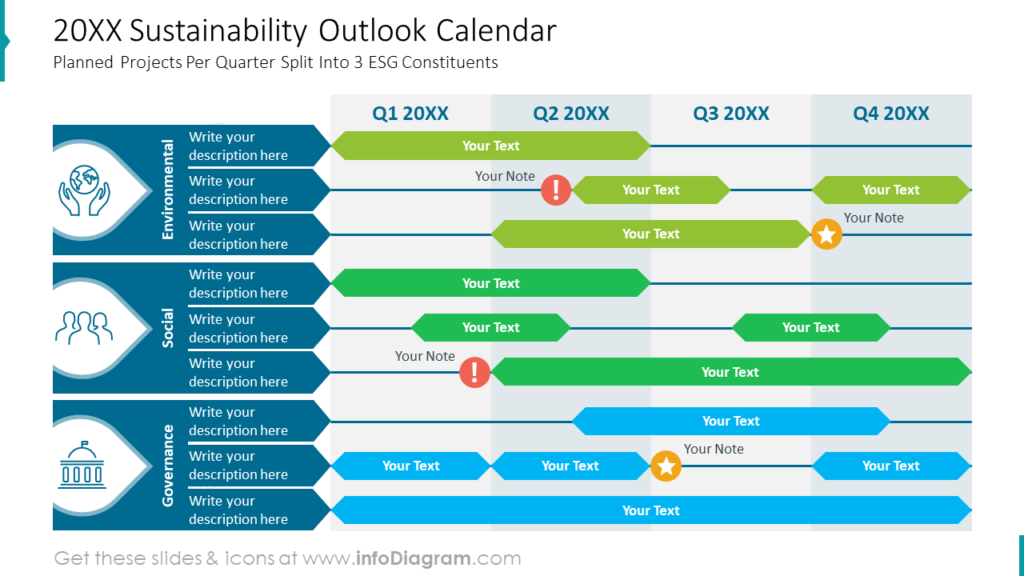
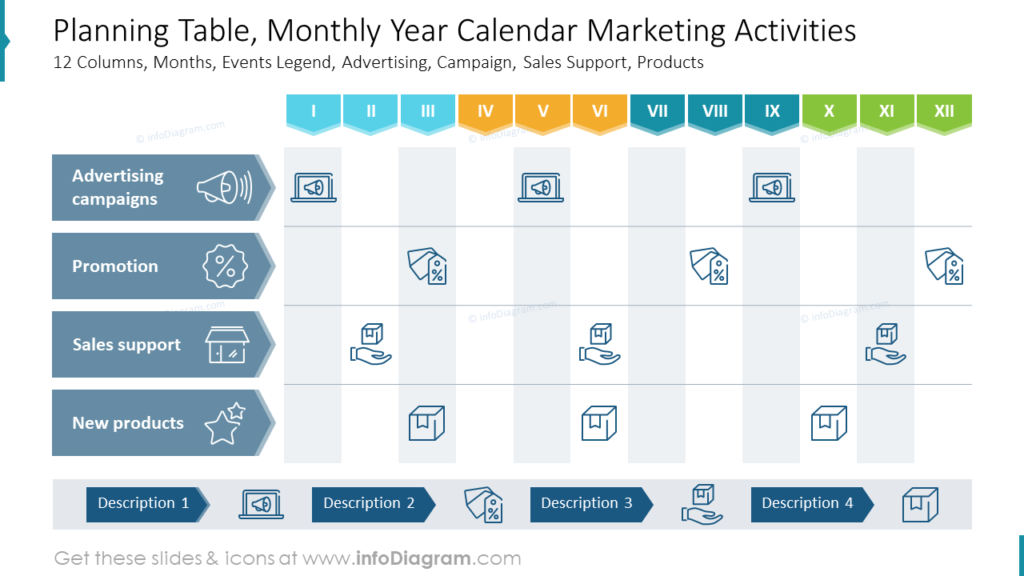
If multiple people are involved, a calendar aids in scheduling and coordination. It allows for flexibility and adaptability as plans can be adjusted by rearranging tasks. Lastly, a calendar facilitates communication and collaboration by providing a clear overview of the plan. Overall, using a calendar enhances time management, progress tracking, and collaboration in executing an action plan.
#2: Timeline or Roadmap
A timeline visually represents events, milestones, or tasks in chronological order. It provides a linear view of the action plan, showing when each activity or milestone is expected to occur. Timelines are easy to understand and you can easily enhance them with color coding, annotations, and additional details to highlight important dates or deadlines.

A roadmap is a high-level visual representation of key milestones, goals, and initiatives over time. It can be used to communicate the overall direction and strategic objectives of an action plan. Roadmaps typically include stages, deliverables, and dependencies. They help stakeholders see the big picture and track progress toward long-term goals.
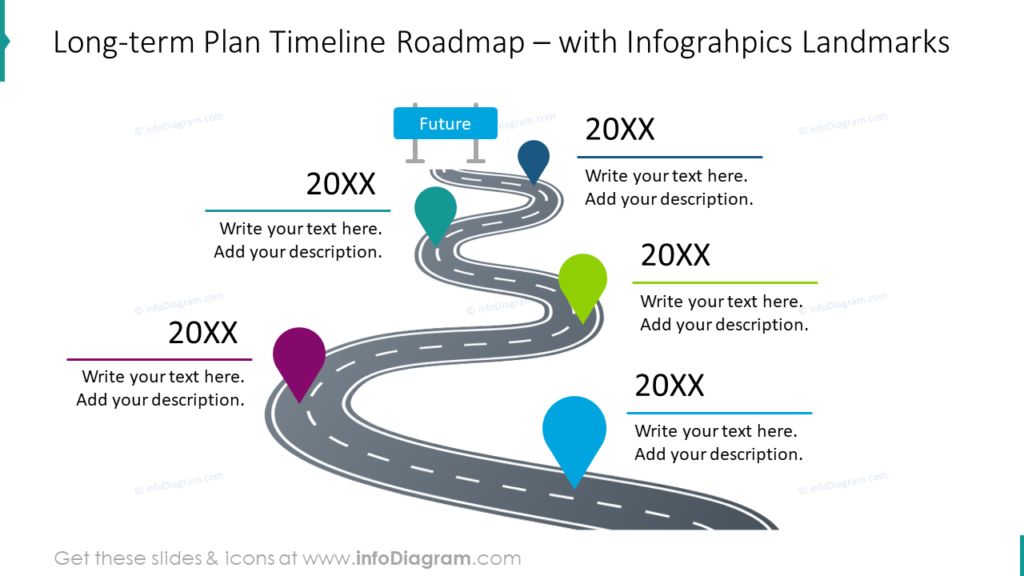
It’s a good practice to implement color coding by assigning a specific color to both the date and a pin or marker.
#3: 30-60-90 Days Plan
The 30-60-90 plan is a specific type of action plan that outlines goals and objectives for the first 30, 60, and 90 days of a new project, job, or initiative. You can also use such graphics while creating an actionable project template to divide big goals into manageable tasks for the nearest quarter or show end goals during the performance review.
Below you can see s couple of versions of how you can visualize the 30-60-90 plan:

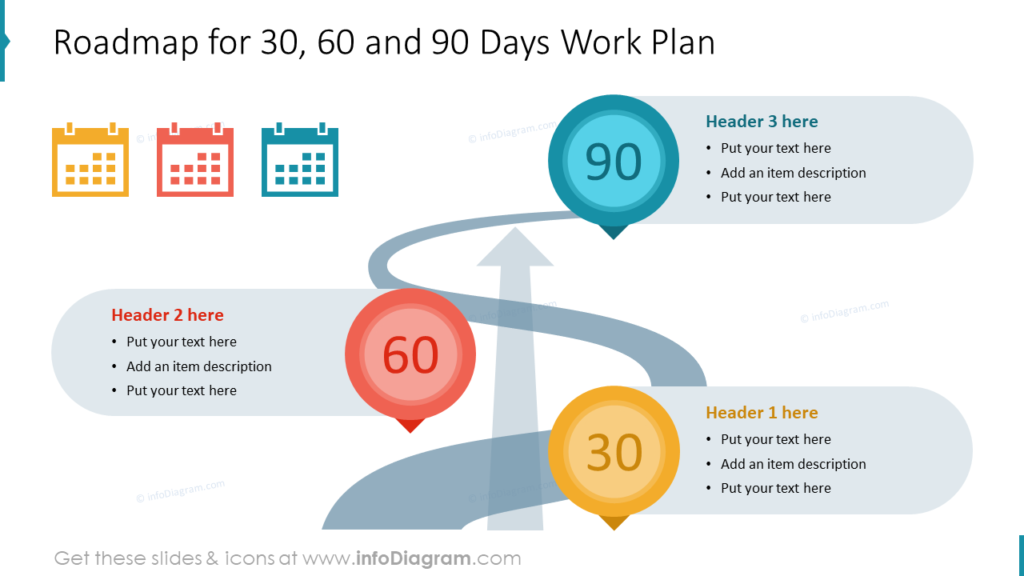
#4: Gantt Chart
A Gantt chart is a horizontal bar chart that illustrates the schedule of tasks and their dependencies over time. Each task is represented by a bar, and the length of the bar represents the duration of the task. Dependencies between tasks are shown through arrows or lines. Gantt charts provide a visual overview of the project timeline and help in understanding task durations, overlaps, and critical paths.
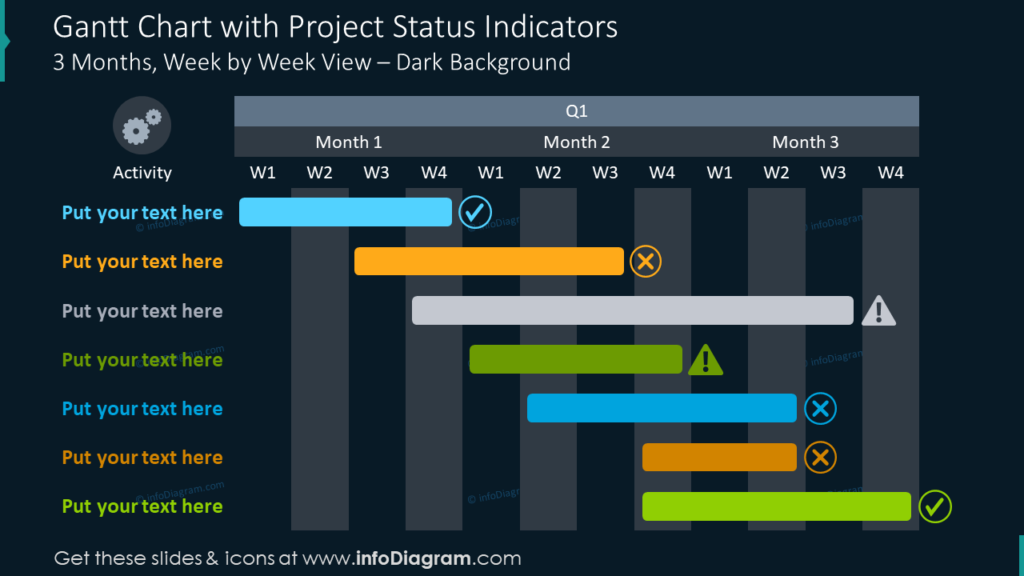
#5: KPI slides and Dashboards
To remind measurable results and goals achievement status, you can use KPI slides or dashboards. They will help to keep track of the progress and motivate your team members. Data dashboards are also a good tool for consolidating the information you want to present on one slide and analyzing the big picture.
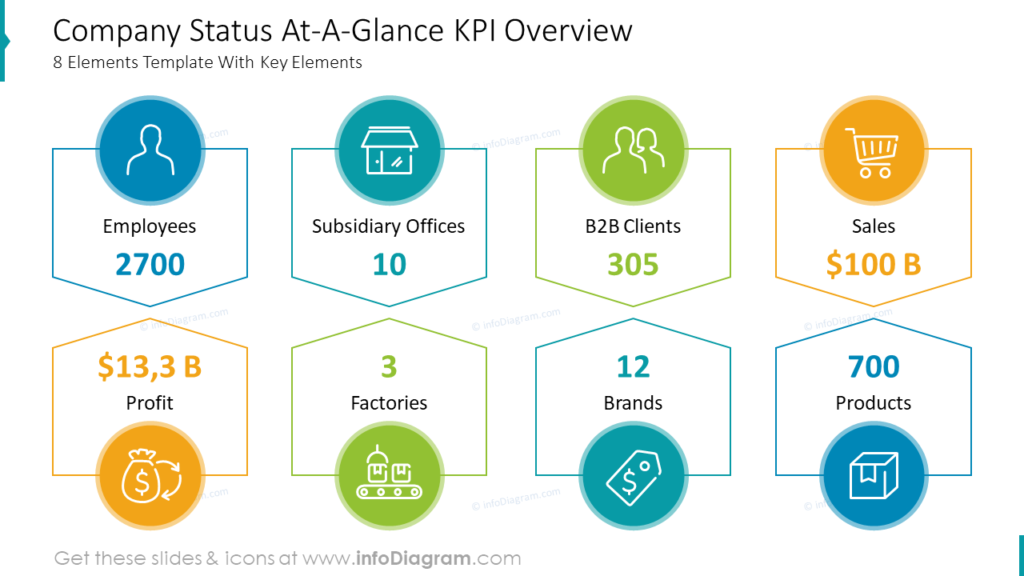
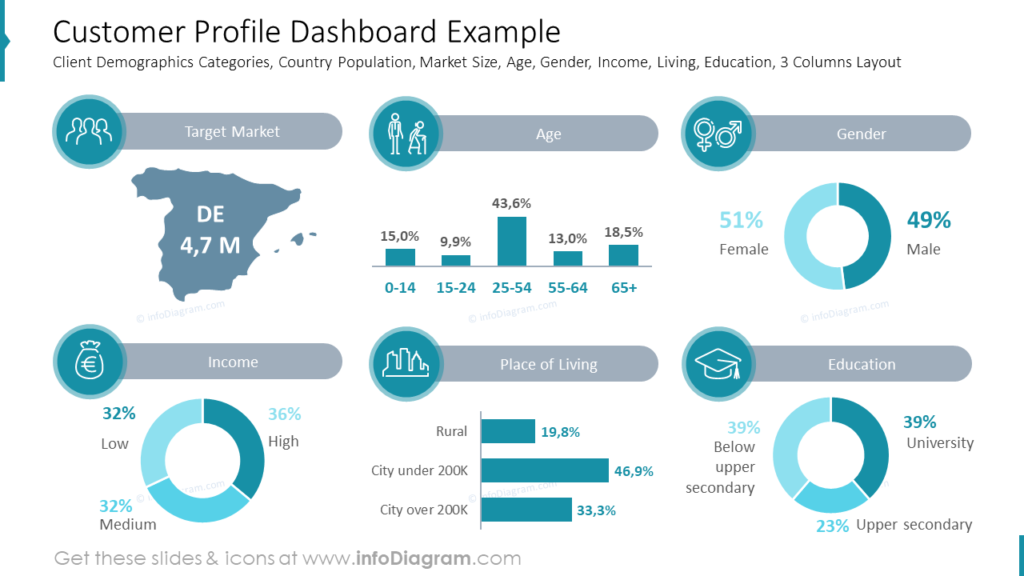
#6: Vision, Mission, and Goals
To motivate people to take action, you can remind the company’s mission, vision, and global goals.
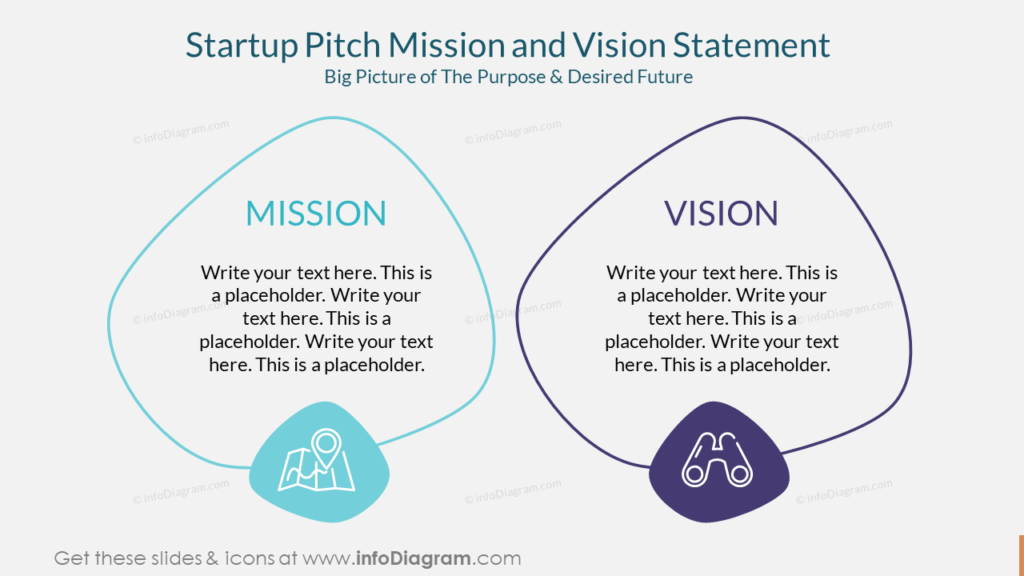
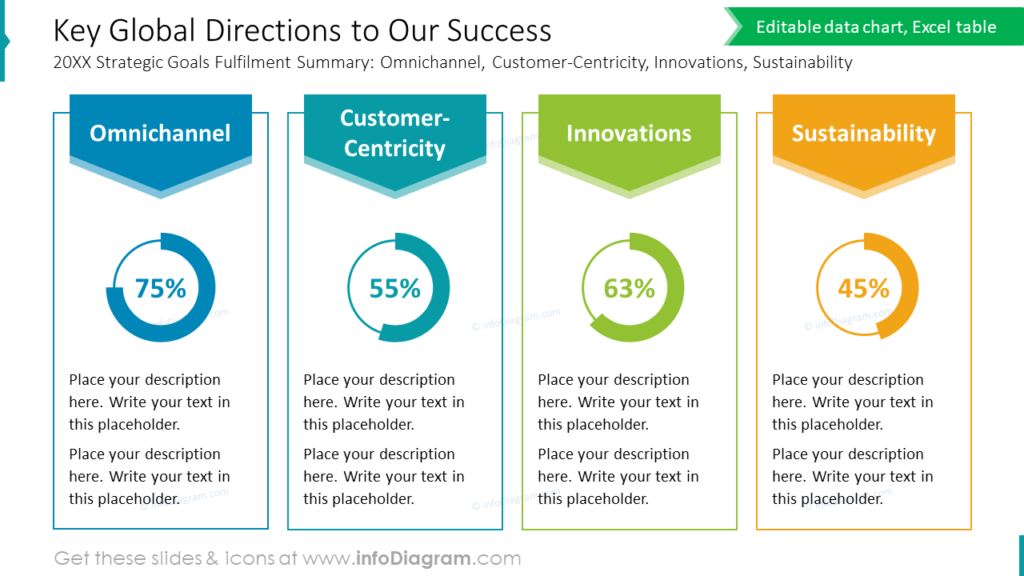
Creating an Effective Action Plan: Practical Tips
Define your goals and objectives
Before you can create an effective action plan, it’s important to clearly define your goals and objectives. What do you want to achieve? What specific outcomes are you aiming for? Take the time to think about what you want to accomplish and write it down.
Break down goals into actionable tasks
Once you have clearly defined your goals, it’s time to break them down into actionable tasks. This step is crucial because it allows you to create a clear roadmap for achieving your goals. Start by identifying the specific actions that need to be taken to move closer to your desired outcome. These actions should be specific, measurable, achievable, relevant, and time-bound (SMART).
This will help track your progress and stay motivated along the way. Remember to prioritize your tasks and set deadlines to ensure that you stay on track and make steady progress toward your goals.
Set realistic deadlines
It is an essential part of effective goal planning and time management. Deadlines create a sense of urgency and help you stay focused and motivated to complete your tasks promptly.
When setting deadlines, consider the time and resources needed to complete each task. Break down larger tasks into smaller, manageable chunks and assign a deadline to each one. By setting specific deadlines, you can hold yourself accountable and increase your chances of success.
Track progress and make adjustments as needed
Once you have set your goals and created your action plan, it is important to regularly track your progress and make adjustments as needed. Regularly reviewing your action plan and assessing your progress can help you identify any obstacles or challenges that may be hindering your success.
By making adjustments to your plan, such as reallocating resources or changing strategies, you can overcome these obstacles and continue moving forward. Remember, flexibility is key when it comes to achieving your goals.
Further Inspiration
If you’re looking for more design ideas, check out the following articles:
- How to Make Presentation Slide Reading Flow Easy-to-follow
- Simplify Project Management Presentations with Traffic Lights
- How to Draw Attention to the Main Message on a Slide
- Design Project Management Presentations Faster with These PPT Templates




